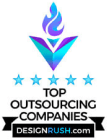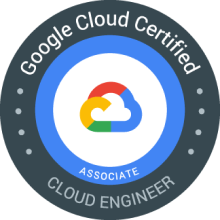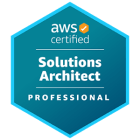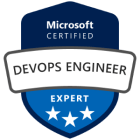DevOps Migration and Maintenance for Flexwise
Flexwise, a smart workforce management solution, required project transformation to cloud to optimize workload and improve stability.
- Duration 2018 – ongoing
- Team 5 members
- Type DevOps; IT Consulting
- Industry Healthcare
- Platforms Web
Project challenges
-
The use of legacy software created unnecessary workload due to manual infrastructure management.Lack of quick service integrations caused a slow response to market demands.
-
Ensure 100% compliance of software infrastructure with specific healthcare regulations.Support the client's core need for secure processing of patient data.
The DevOps team worked in a tight coordination with developers to help them rearchitect the software into microservices and transit to cloud. The implemented plan enabled us to facilitate integrations. Infrastructure management improved.
Results
-
$6M
Raised funding
-
Up to 35%
Decreased scaling costs
-
99.9%
Security coverage
The IT Craft DevOps team prepared an improvement plan based on the client's goals and concerns. It executed a seamless transition to a new architecture. The team built the new infrastructure using top-notch technologies. It implemented all standard regulations necessary/vital for projects in the healthcare domain.
The IT Craft DevOps team prepared an improvement plan based on the client's goals and concerns. It executed a seamless transition to a new architecture. The team built the new infrastructure using top-notch technologies. It implemented all standard regulations necessary/vital for projects in the healthcare domain.
Core Tech
-

AWS
-

Kubernetes
-

Terraform
-

Jenkins
Planning
Input
The client initially:
- A bare-metal hosting solution, which limited the development team's capabilities.
- The need for stable, flexible, and adjustable infrastructure that could best support changing development needs.
- Required a transition to a modern tech solution for security and compliance regulation reasons.
Analysis
The team:
- Facilitated the split of monolithic software into microservices.
- Migrated the project to managed Kubernetes environments.
- Built the infrastructure using IaС and GitOps methodology.
- Used zero-trust architectural approach to comply with regulations.
Result
Our work resulted in:
- Project transformation to cloud architecture (Amazon Elastic Kubernetes Service).
- Increased fault tolerance by 80%.
- Streamlined, 2x faster releases within GitOps methodology.
- Decreased infrastructure cost allocation by up to 35% due to improved resource utilization.
- Harmonized infrastructure with HIPAA compliance regulations.
- Reached 99.9% security coverage.
Business benefits
Flexibility
Migration from legacy infrastructure to cloud environments, along with Kubernetes, enabled the team to adjust software to emerging market needs easily.
Agility
The client has automated tools for managing existing clusters and creating new, facilitating Day-2 operations. Component deployments are fast and efficient, freeing resources for working on business challenges.
Security
A high-security level of the project is possible using top-notch technologies and implementing requirements following strict security regulations such as HIPAA compliance.
Trustworthiness
Secure processing, storage, and transfer of user data have made the product more attractive to customers and potential investors, eventually resulting in an acquisition by a large agency.
Main Steps
-
Step 01
Analyzed technical and business requirements. Proposed the roadmap for migration to a new infrastructure.
-
Step 02
Proposed the most beneficial cloud solutions based on the market research in the client’s particular domain.
-
Step 03
Set up and rolled out Kubernetes infrastructure (AWS EKS) using the IaC approach (Terraform) and within the GitOps methodology.
-
Step 04
Used Jenkins for CI/CD processes.
-
Step 05
Most of the essential components operate within the Kubernetes environment. The primary one is the GitOps operator ArgoCD.
-
Step 06
Configured services to be used for machine-learning jobs.
-
Step 07
Achieved observability using a combination of Prometheus operator and Grafana for Kubernetes cluster monitoring.
Project timeline
-
Project timeline
2018 – ongoing
Technologies
-

AWS
-

Kubernetes
-

Terraform
-

Jenkins
-

Prometheus
-

Grafana
-

Github
-

ArgoCD








